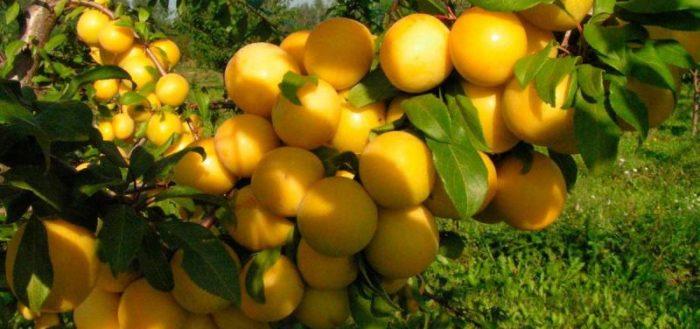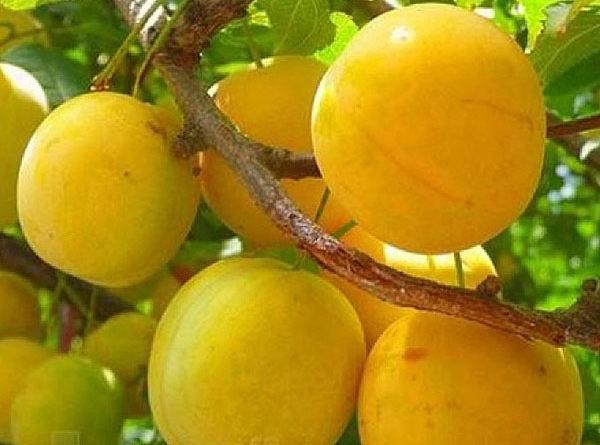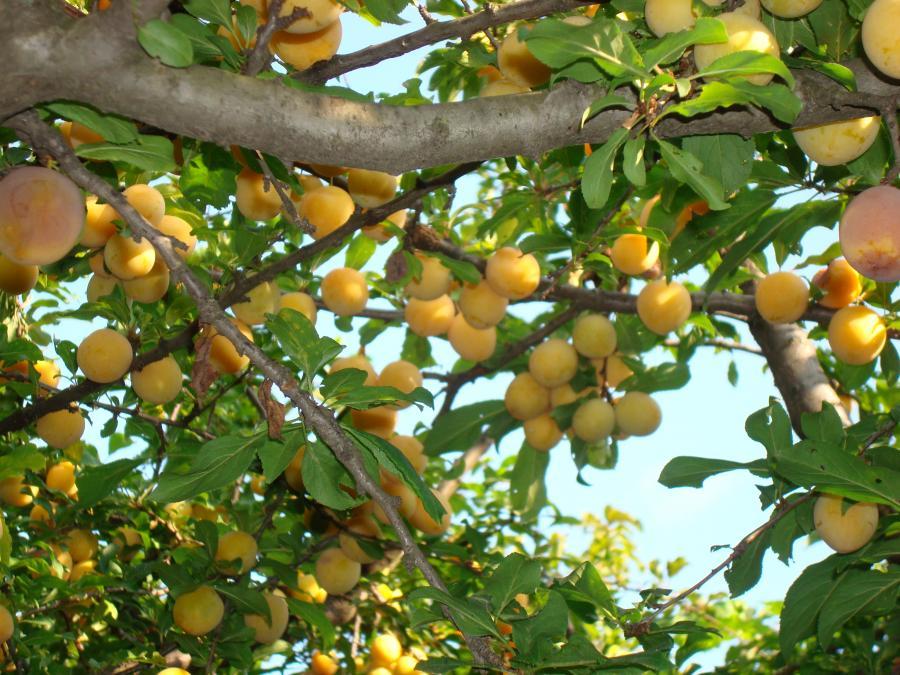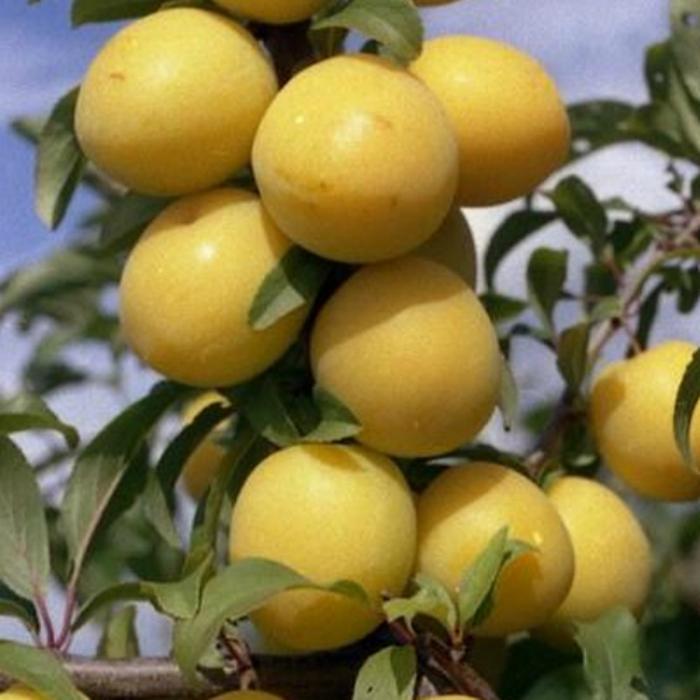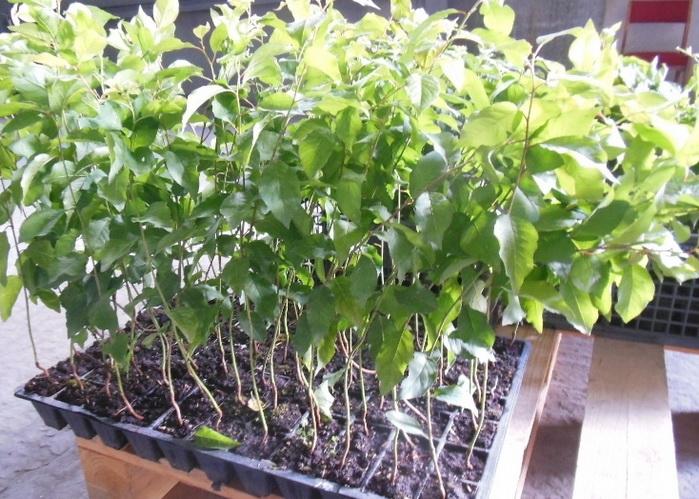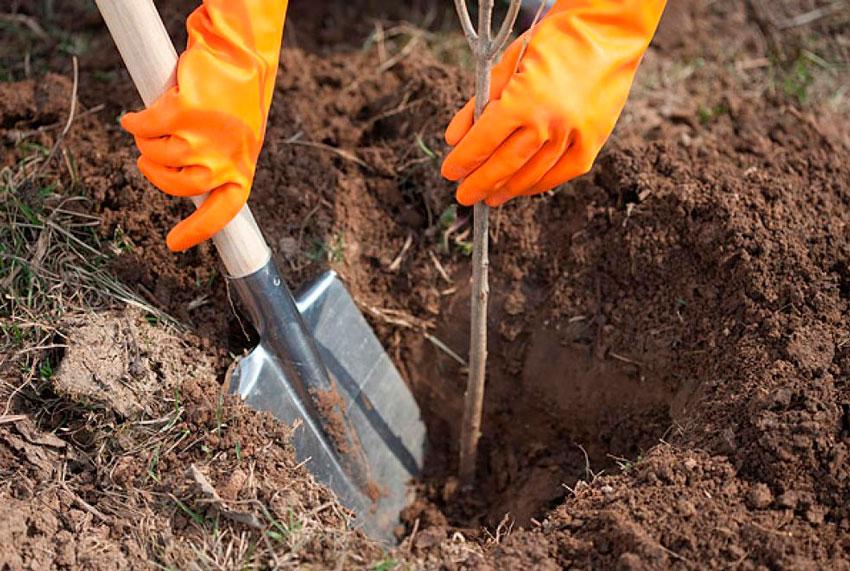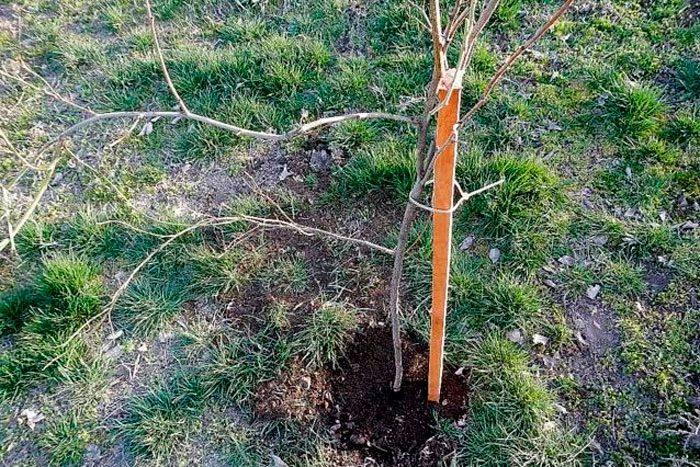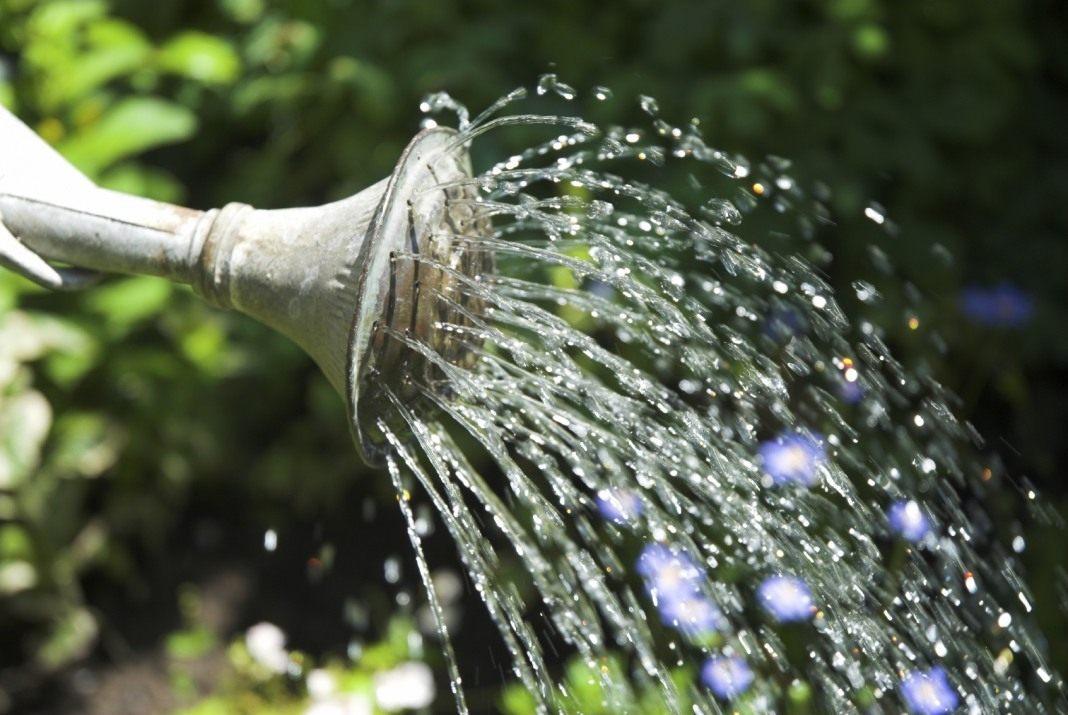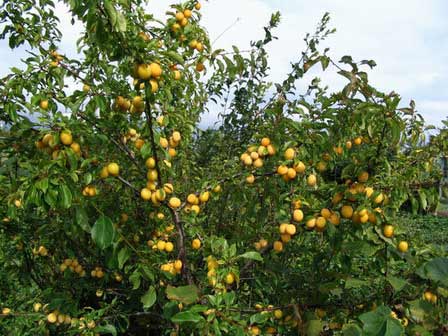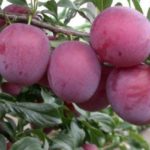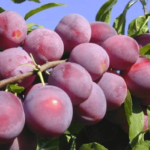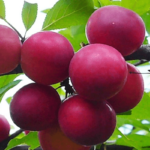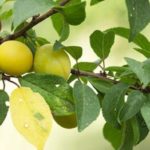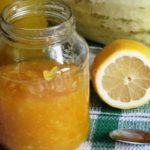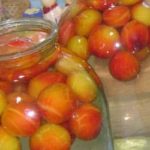Cherry plum Gek is a universal variety that delights with its rich taste in fresh and canned form. The fruit is popular among experienced gardeners and novice gardeners. Cherry plum is unpretentious in care and easily takes root in all regions of the Russian Federation. The yield is high, the variety is suitable for breeding for personal consumption or sale. To successfully grow a fruit tree, you need to familiarize yourself with all the nuances.
- History of selection
- Wood appearance
- Features of the fruit
- Resistance to low temperatures and dry climates
- Susceptibility to diseases and parasites
- Pollinator varieties
- Productivity and fruiting
- Application of fruits
- Advantages and disadvantages of the variety
- How to plant a tree on a plot
- Optimal time for planting
- Selecting a location and preparing a seedling
- Landing technology
- How to plant seedlings with an open root system
- How to plant seedlings with closed roots
- We organize competent care
- How often to water?
- What and how to feed the plant
- Specifics of crown formation
- Tree trunk care
- Preventative treatments
- Wintering a tree
History of selection
Cherry plum Chuk and Gek or Russian plum is a hybrid of medium fruiting period. It was bred by symbiosis of the Chinese plum with the cherry plum Ochlitnitsa in the experimental breeding laboratory named after N.I. Vavilova. The creators of the variety are G. Eremin and S. Zabrodina. The type has been listed in the state register since 1995. It is approved for use in the North Caucasus and Lower Volga regions.
Wood appearance
Cherry plum trees grow of medium size with an even column of medium thickness and are famous for their rapid growth. The shoots are about 3-5 centimeters wide, with a vertical slope. As it grows, the vector changes to horizontal. The bush is dense, flat-round in shape. Bouquet branches are short and live for a short period, up to 3 years. There are a large number of buds on the branches, each of them produces 2 flowers. Flowering is early, in early April. Fruiting occurs in mid-July. Trees produce crops 3-4 years after planting for 20-25 years.
Features of the fruit
The harvest ripens abundantly, fruits are eaten in any form. They differ in the following features:
- the berries are large, weighing 30-45 grams, round-oval in shape;
- medium-density skin, elastic, with a waxy coating;
- the side seam is clearly visible along the entire length;
- the pulp is medium juicy, not dense, gristly, yellow in color;
- the bone is small, easily separated from the pulp, sweet and sour.
The variety received a tasting score of 4.2 points. This means that the taste is good and the variety is worthy of cultivation. Fruits of universal use, sugar content is 8.5%. Fully ripe fruit has a slightly orange undertone, small dots are faintly visible. They can easily withstand transportation and retain their original appearance for 1 month after being torn off.
Resistance to low temperatures and dry climates
Cherry plum Gek is famous for its average resistance to low temperatures. Drought tolerance is also average. The tree is moisture-loving, like other varieties.
Susceptibility to diseases and parasites
The cherry plum subspecies Gek is practically not susceptible to pests and diseases. Resistance to them is high. If a tree is attacked by beetles or diseases, they do not harm it.
Pollinator varieties
The tree does not pollinate itself. Desirable pollinators include Chinese plum and any other varieties of cherry plum. This stimulates abundant fruiting.
Productivity and fruiting
The tree yields consistently from the last days of July until the end of August. The fruits do not immediately fall from the branches; they last for about a week from the moment of ripening. From one tree you can collect approximately 30 kilograms of cherry plum.
Application of fruits
Jams, jams, dried fruits, and compotes are widely prepared from fruits. Cherry plum retains most of the nutrients when properly frozen. Fresh fruits can be consumed immediately, or used for making baked goods or as a decoration for desserts.
Advantages and disadvantages of the variety
The Gek variety of cherry plum suggests a number of positive and negative properties.
| pros | Minuses |
| Precociousness | Self-sterility |
| Large amount of harvest | Average drought tolerance |
| Good fruit taste | |
| Large marketable fruits | |
| Winter hardiness | |
| Immunity to diseases, bugs | |
| High tree survival rate in different conditions |
How to plant a tree on a plot
Gek cherry plum is planted in several ways. These include:
- from a seed;
- using a seedling;
- vaccinations - budding.
To preserve properties, they often resort to vegetative propagation. When pollinating trees planted from seed, insects mix pollen from different varieties. Then the taste and appearance of the fruit changes. Propagation of cherry plum by sowing seeds is the most economical way. Buying a seedling requires little financial investment, but the tree grows faster.
Optimal time for planting
In the southern regions, it is advisable to plant cherry plum in the fall. Then she gets used to it better. In regions with frosty winters, it is safer to plant a tree in the spring.
Selecting a location and preparing a seedling
Experienced summer residents advise planting planting material in a place where the soil is fertile, using various agronomic techniques. In areas with a natural depression, in order to avoid overheating of the rhizome, the cherry plum is placed on a mound 60 centimeters high. The root collar should be above the soil.
- Slopes facing south-west and north-west, where the sun's rays constantly shine, are ideal.
- The soil should be slightly acidic with a light structure.
- Groundwater should be located no higher than 1.5-2 meters.
When choosing a cherry plum seedling, you need to pay attention to its appearance. There should be no damage on it, the trunk, leaves and shoots should be free of wrinkles, spots, and curvatures. A normal rhizome is at least 10 centimeters in length, white in color. It is better to buy planting material in nurseries or specialized stores.When purchasing on the market, there is a risk of getting the wrong variety, an infected or wild seedling. There is no need to immediately place it in the soil. First, carefully examine the root system:
- remove deformed and dried fragments with pruning shears, trim healthy ones a little;
- if a brown color is visible on the roots of the cherry plum, cut off this place;
- make a clay, liquid mash with mullein, place the roots in it.
Manipulation maintains the water balance in the plant, preventing it from drying out while it is still in the soil. Due to the presence of mullein in the mash, the planting material is supplied with nutritional components.
Landing technology
Cherry plums are planted using seedlings with closed and open rhizomes. Each option has its own planting technique. The first case is the most labor-intensive, which cannot be said about planting a seedling in a container.
How to plant seedlings with an open root system
You should first prepare holes for cherry plums measuring 60*60 and 80 cm deep. Dig them at a distance of 2.5 meters from each other. Dig up the soil around and remove weeds. Add ash to the ground as a green supplement. From the excavated soil, create a mixture that includes:
- humus 10-15 kilograms;
- nitrophoska – 140 grams;
- ash – 0.5 kg.
Place drainage made of broken bricks at the bottom and fill the soil mixture halfway. Form a mound and insert a stick into it to support the seedling. Straighten the root system inside the recess, fill it with the rest of the mixture so that the neck of the root does not go deep and remains above the surface. This will help the tree to develop properly. Trample the ground around the trunk and water it generously with warm water.
After absorbing the liquid, loosen and mulch with humus and straw or freshly cut grass.
How to plant seedlings with closed roots
Cherry plum seedlings in containers with a closed rhizome can be planted without digging holes. They are placed in the right place on the plot, held by the stem, and the rhizome is generously covered with soil mixture. Afterwards, trim the trees and water each plant with 3-4 buckets of water. During drought, water young cherry plums every 10 days throughout the growing season.
We organize competent care
Cherry plum Gek does not require special care. It consists only of the following activities:
- timely watering, weeding, fertilizing;
- treatment against pests and diseases;
- shelter for the winter.
For proper care, the tree will reward you with a bountiful harvest.
How often to water?
It is necessary to irrigate the cherry plum regularly, especially in summer with sparse precipitation. Water with warm water, strictly under the root system 3 times a month. It is especially often necessary to irrigate young trees. One plant will need 4 buckets of water.
What and how to feed the plant
In the first year of cherry plum life, there is no need to feed it, since the soil is fertilized before planting. From the 2nd year and subsequent years, the following fertilizing should be applied:
- mineral;
- organic.
In the spring it is worth fertilizing the cherry plum with nitrogenous substances, in the summer and autumn - with potassium-phosphate compounds. After pollen, feed the tree with urea. Every autumn after harvesting, add humus or compost material under the trunk. Half a bucket is enough for 1 tree.
Specifics of crown formation
The cherry plum Gek needs the formation of a bush, but it is insignificant, since by nature it has the shape of a regular oval. You should also thin out the branches so that all the fruits are saturated with sunlight.
Every spring, carry out sanitary pruning of cherry plums, remove all shoots that have frozen over the winter period, as well as old, diseased branches.
Tree trunk care
After watering the tree, mulch the soil along the diameter of the trunk circle and remove weeds. Humus, compost or sawdust are suitable as mulching materials. The layer should be 7-10 centimeters.
Preventative treatments
Cherry plum is famous for its strong immunity to beetles and diseases, but the tree can be periodically treated for preventive purposes. Actofit and Cesar are used against aphids. This pest attacks most often, but does not cause harm. Only the aesthetic appearance of the tree suffers.
Wintering a tree
Cherry plum trees require high hilling of the trunk and mulching of the trunk part. When the snow falls, you can hill up the trunks with it and cover the near-trunk part with a snowdrift. Under such cover, the variety is not afraid of frost.

